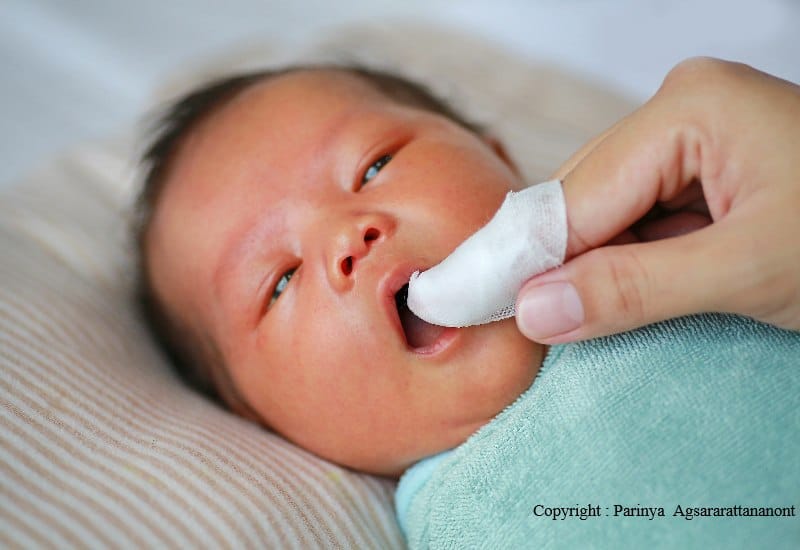A child of a parent with chronic tooth decay is more likely to inherit the caries disease. This disease caused by germs spreads easily within family members and can last a lifetime. The explanation of how one kid can eat all sorts of sugary foods, never brush or floss, and still have no cavities may explain the essential role that bacteria play in the disease.

When a parent in Pennsylvania took her 4-year old daughter to her first check-up, she was shocked when the dentist found a large cavity in one of the child’s molars. Before the mom could schedule an appointment, the child complained of a toothache. Decay in that tooth had progressed, so the dentist had to remove it. Her mother, who has had a history of dental problems, believed that it was because the child had inherited her “soft teeth.” We all have heard the excuse of “soft teeth running in the family,” but what is really is happening is the transference of high levels of bacteria to the child.
The Myth of “Soft Teeth”

Since babies are born free of bacteria in their mouth, it is often moms that transfer the bacteria to their child by eating from the same spoon (testing the heat) or letting your baby brush his teeth with her toothbrush. If the mom frequently had cavities herself, it is likely they will pass the germs along. Once a child’s mouth has become infected by the mom’s bacteria, the baby will be prone to cavities in both baby and permanent teeth. This decay can cause pain and difficulty eating.
Dental Caries Begin with the Presence of Plaque
Dental Caries is the most prevalent of diseases in children today, even more than Asthma and Diabetes. The trend for much more sugar in diets at an early age contributes to the high statistic. Bottled water without fluoride may also contribute to the growing problem. Tooth decay begins with bacteria that feed on sugar and produces acid. This acid dissolves the outer structure of the teeth by depleting calcium. The bacteria also create plaque—a yellowish film that contains even more enamel-eroding acid. Once an area without calcium becomes big enough, the surface of the tooth collapses, and that’s a cavity. Eighty- percent of all cavities occur in just 25 percent of kids.

Dental Check-up before your Child is one-year-old.
The ADA recommends that a child see a dentist by his first birthday. Only 34 percent of 1 to 2 -year-olds have ever visited the dentist. Not all pediatricians check a toddler’s oral health. Treating cavities in baby teeth is essential to provide room for permanent teeth. Losing one too soon may increase the need for braces later on.

What’s a Mom to do?
- Don’t share utensils with your baby. They should have a separate toothbrush and spoon.
- Diligently brush and floss your child’s teeth (and your own), which physically pushes bacteria, plaque, and sugar off the teeth. By your example, you will show the importance of taking care of your dental health.
- Drink fluoridated water. It restores calcium to decaying teeth and limits the production of corrosive acid.
- Get your child’s dental check-up before one-year-old.
- Tame the sweet tooth. Try fruit instead of cookies; water instead of juice. Limit crackers, cereal, and sticky foods as they can also promote decay. The Frequency of sugar is worse than quantity. (A high intake of sugar at once is less harmful to the teeth than eating one bite every hour.)
- Since formula and breast milk allow sugar to sit on the teeth 10-12 hours, it is best if a high-risk child is off the bottle by 14 months.
We all love our children. We just need to know how we may be passing bacteria to them that may cause them harm.
